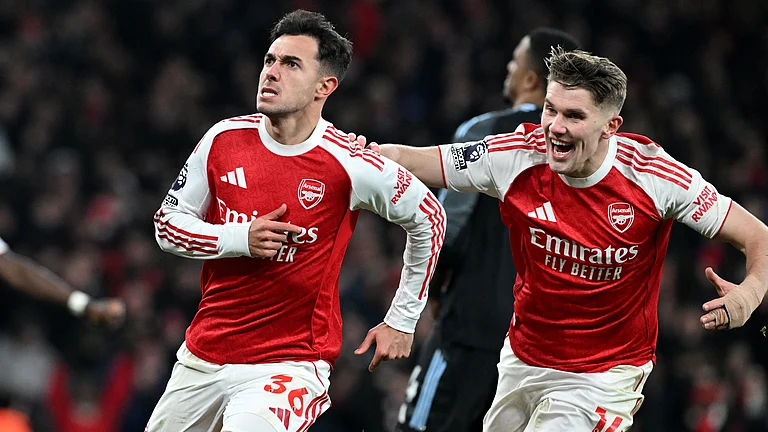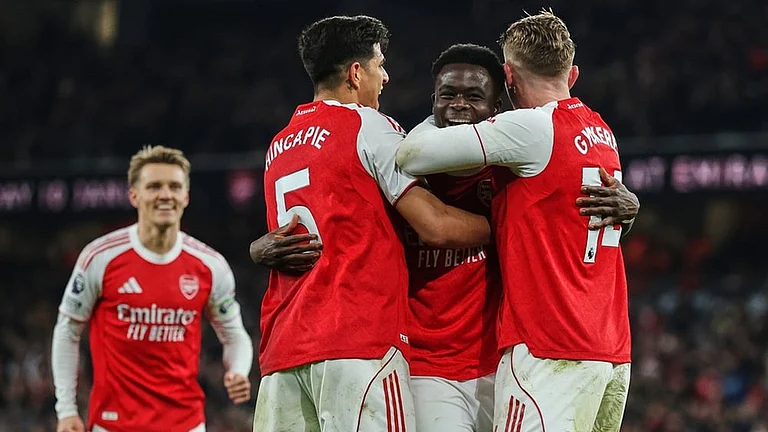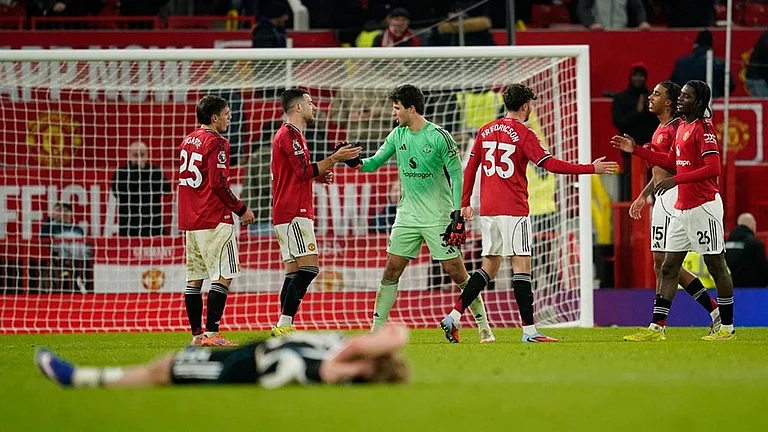Recent studies are optimistic that 2021 will see India re-emerge among the fastest growing economies. According to the Organisation for Economic Cooperation and Development (OECD), after recording a contraction of 9.9 per cent in 2020, the Indian economy is expected to rebound and grow 7.9 per cent in 2021 and 4.8 per cent in 2022, following the trend of the global economic recovery. From a contraction of 4.2 per cent this year, global GDP is expected to bounce back to a growth rate of 4.2 per cent in 2021, the 37-member OECD, comprising mostly developed economies, said in a review. Forecasting that the world economy will return to pre-pandemic growth levels by the end of next year, OECD warned that the recovery will be uneven across countries and downside risks persist.
“For the first time since the pandemic began, there is now hope for a brighter future,” OECD chief economist Laurence Boone wrote in the report. “Progress with vaccines and treatment has lifted expectations and uncertainty has receded. Thanks to unprecedented government and central bank action, global activity has rapidly recovered in many sectors, though some service activities remain impaired by physical distancing.” OECD projected that countries and regions with effective “test, track and isolate systems”, where the vaccination will be deployed rapidly, are likely to perform relatively well, though the overall weakness in global demand will rein them in.
India was worst hit by the pandemic, second only to the US, with over 1.4 lakh deaths so far and a total caseload of over 1 crore. As lockdowns stopped most economic activities, April-June quarter GDP took a massive hit of 23.9 per cent below its 2019 level. The economic shock was so big that nearly a quarter of economic activity in India was wiped out, with demand drying up globally as well as in the domestic market. Only the agriculture sector, buoyed by a bountiful harvest, remained largely unaffected and emerged as an important driver of recovery. GDP fell 7.5 per cent in the July-September quarter, against a contraction of 23.9 per cent in the April-June quarter. Giving positive signals, manufacturing output was about 3.5 per cent higher in October 2020 compared to the year-ago period, while the output of consumer durables rose by almost 18 per cent.
Expressing optimism that India “may break out of contraction and turn positive during January-March”, Reserve Bank of India (RBI) governor Shaktikanta Das said last month that improvement in the economy is “not steady and continuous yet”, though the recovery is multi-speed as more sectors are showing an upturn. S&P Global Ratings recently “revised real GDP growth to negative 7.7 per cent for the year ending March 2021, from negative 9 per cent previously”, because “rising demand and falling infection rates have tempered [S&P’s] expectation of Covid’s hit on the Indian economy”. For FY2021-22, S&P projected growth to rebound to 10 per cent.
The revised growth forecast for the current fiscal reflects a faster-than-expected recovery in the September quarter. A faster recovery keeps more of the economy’s supply side intact and can set India up for more prolonged above-average growth during the recovery phase, S&P added. According to the Asian Development Bank, the economy is likely to contract 8 per cent as against the earlier forecast of 9 per cent contraction. The sharper-than-expected rebound by India’s economy in the second quarter has indeed taken most analysts by surprise. Fitch Ratings, for instance, now expects the GDP to contract at 9.4 per cent in the current financial year, down from 10.5 per cent forecast in September 2020. The new forecasts suggest more small businesses can survive and more workers can keep their jobs or find new ones.

Nomura has also turned positive on India’s cyclical outlook for 2021, and believes the country is on the cusp of a cyclical recovery. The change in stance comes after nearly two years (end-2018), when it had turned negative on India’s growth. “We project GDP growth to remain in negative territory in Q1-2021 (-1.2 per cent), pick up to 32.4 per cent in Q2 on base effects, before easing to 10.2 per cent in Q3 and 4.6 per cent in Q4. Overall, we expect GDP growth to average 9.9 per cent in 2021 versus -7.1 per cent in 2020, and 11.9 per cent in FY22 (year ending March 2022) versus -8.2 per cent in FY21,” wrote Sonal Varma, managing director and chief India economist at Nomura in a December 8 report co-authored with Aurodeep Nandi.
Given the uncertainty surrounding the vaccine, Nomura expects the RBI to maintain an accommodative stance in the first half of calendar year 2021 (H1- 2021) and a gradual withdrawal of liquidity in the first/second quarter (Q1/Q2) of 2021, shift to a neutral stance in Q2/Q3CY21, followed by higher policy rates in early 2022. It expects inflation to average at around 5.5 per cent in H1-2021, before easing to 4.1 per cent in the second half. Moody’s too upped India’s growth forecast to (-)10.6 per cent for the current financial year, from its earlier estimate of (-)11.5 per cent.
As economic activity picks up pace, India is learning to live with the virus and reported cases have fallen by more than half from peak levels, to about 40,000 per day. The S&P report states: “The aim to inoculate 300 million people by August 2021, combined with an existing high infection rate in some parts of the country, could result in a pronounced decline in reported cases later next year. This would speed up the transition to a new normal.” The festive season from September witnessed a pickup in consumer sentiments, leading to a rise in sale of consumer durables and vehicle sales, both two-wheelers and cars. “This recovery underscores one of the more striking aspects of the Covid shock: resilience of the manufacturing supply chain,” said S&P’s Asia-Pacific chief economist Shaun Roache. The RBI too has been careful about cutting its policy rate, especially as higher inflation pushed real rates to exceptionally low levels.
Experts say a rise in infections due to crowding during recent festivals, fading of pent-up demand after the initial reflex, fiscal drag from expenditure compression in Q1, as the government struggles to keep the deficit under control, and weaker growth in Europe and the US due to the pandemic are among risks that could trigger a slowdown. A key concern in 2021 and beyond, Nomura said, is the implication of the K-shaped recovery seen till now. A slower pace of recovery in the informal sector implies the cyclical recovery may be a jobless recovery, leading to lower per-capita income, higher inequality, pressure for more populist spending by the government and social tensions. Nomura also cautions against the structural balance sheet challenges, particularly elevated non-performing assets (NPAs) in the financial sector, constrained fiscal space and a corporate sector focused more on deleveraging than capex.
India has been knocked off course by the pandemic and, as a result, the UK overtakes the country in this year’s forecasts and stays ahead till 2024 before India takes over again, says a report by Centre for Economics and Business Research (CEBR), a UK-based think tank. India will become the fifth-largest economy by 2025 and the third-largest by 2030 after overtaking the UK in 2025, the report states. The estimate suggests India’s GDP per capita in 2020 was $6,284, making it a lower-middle-income country.
Though Covid delivered a major blow to the Indian economy, according to CEBR, it was losing momentum even before the pandemic due to a fragile banking system, adjustment to reforms and deceleration of global trade. However, as restrictions were gradually lifted, many parts of the economy were able to spring back into action, although output remains well below pre-pandemic levels. “The pace of recovery will be inextricably linked to the development of the pandemic, both domestically and internationally,” the report said, adding that India is better placed than other developing countries to roll out vaccines successfully in 2021. CEBR based this analysis on the fact that India manufactures the majority of the world’s vaccines and has a 42-year-old vaccination programme that targets 55 million people each year.


























